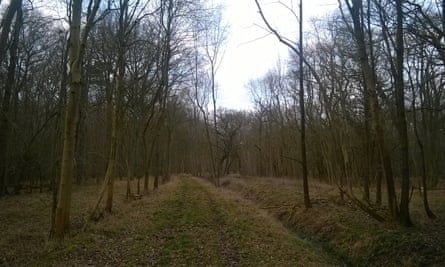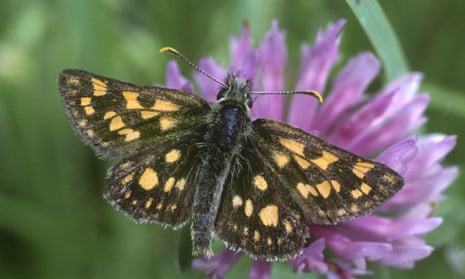This May the small brown and gold wings of the chequered skipper will once again beat in the woods of England. Susannah O’Riordan from Butterfly Conservation is here in the butterfly’s spiritual home, the Chequered Skipper pub in Ashton, to reveal the plot to an enthusiastic audience of 80 or so.
The chequered skipper, Carterocephalus palaemon, has never been abundant, but across the east Midlands the pretty little butterfly once frequented purple flowers in wet woodland rides and clearings, while its pinstriped green or fawn caterpillar fed in silken tubes on false brome and broad-leaved grasses. Its national stronghold was Rockingham Forest, the woods being a destination of choice for serious butterfly hunters long before the Wildlife and Countryside Act 1981 protected our most endangered species. Nowadays binocular-touting butterfly fans teem around the woods anticipating heady encounters with the elusive purple emperor and black hairstreak, but there are no chequered skippers to savour.

Woodland management changes did for the chequered skipper. One by one the fragmented populations blinked out as the woods were drained, rides narrowed and glades shaded; the last English butterfly seen was in North Luffenham, Rutland, in 1976.
Susannah explains that the Rethink Nature partnership – seven nature charities including my employer, Buglife – and Natural England have raised more than £7m to “bring back from the brink” threatened English species. The Rockingham Forest element aims to restore active management of open spaces within woods for the benefit of 15 struggling species.

Chequered skippers will be captured from healthy populations with a similar ecology in Belgium and released into the most likely looking Rockingham woods. A previous attempt in the 1990s to re-establish a population in Lincolnshire failed, so changing woodland management will be key to giving these butterflies a fighting chance. Nearby Ashton Wold is a case in point: a uniform-age structure of maturing trees means no open space in which the skippers, bats, birds, orchids and adders can flourish. We must hope that, like the red kite before it, the chequered skipper can become a bit of magic put back in our lives.
- This article was amended on 23 February 2018 to make clear that Natural England is not part of the Rethink Nature partnership.

Comments (…)
Sign in or create your Guardian account to join the discussion